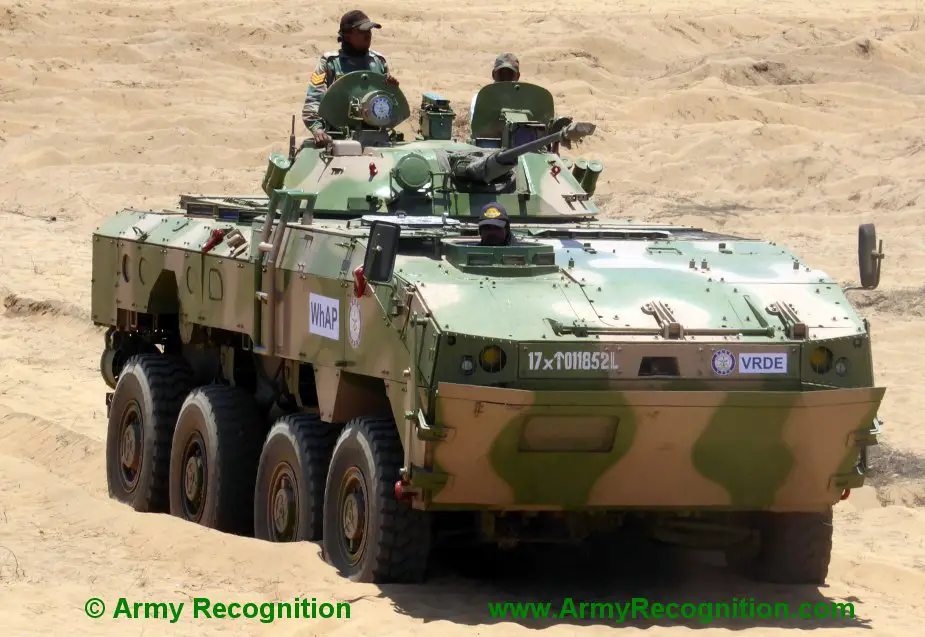Breaking news
Indian Army looking for new 8x8 APCs.
The Indian Army‘s newest Request for Information (RFI) is inviting vendors to submit proposals for 198 8×8 wheeled APCs by February 17 next year, 21stcenturyasianarmsrace.com reports. The vehicles are meant for a reconnaissance and support role in Punjab and Rajasthan. The 20-page RFI lists technical parameters that leave Russia and the US out of the game, as the BTR-82A and the Stryker both fail to match the army’s needs.

Tata WhAP IFV/APC (Picture source: Army Recognition)
The Indian army has the strongest mechanized forces in Asia with its estimated 4,000 main battle tanks (locally assembled T-72M1 Ajeyas and T-90S Bhismas) with an equal number of BMP-2 Sarath infantry fighting vehicles. By comparison, the Chinese PLA’s apparent strength in numbers is diminished by keeping so many aging vehicles in service. The appeal of wheeled APCs with either a 6×6 or 8×8 configuration is spaciousness and larger armaments such as automatic cannons matched with anti-tank missiles. Of course, mobility remains an issue for wheeled APCs, with fully independent suspension systems required if they’re to withstand rough travel.
The 8X8 APC described by the new RFI enumerated the following technical parameters:
* Able to carry a 2-ton payload.
* Transportable by planes like the Ilyushin Il-76 Candid or Boeing C-17 Globemaster III.
* Amphibious with a fording speed of 10km/h.
* Minimum power-to-weight ratio of 25 hp/ton.
* Top speed of 80 km/h. Cruising speed of 30 km/h.
* Mechanical self-recovery winch fitted at the front of the vehicle.
* Armament includes a 30mm cannon, 7.62mm machine gun and two antitank guided missiles in a single turret.
* Additional 8 missiles carried inside, along with a portable ATGM launcher.
* Ballistic protection of STANAG III on the front arc, STANAG II (withstands assault rifles) on the sides, and mine blast protection is STANAG IIb.
* CBRNe protection, active and passive protection systems, and night fighting capability.
* Power assisted ramp at the back for rear access.
* Crew of four.
Application submissions are due before February 17, 2020, at the Sena Bhawan in Delhi.
The Indian Army’s preference for foreign suppliers over local manufacturers is deep-rooted and unchanging regardless of the strategic environment it must cope with. It rejects local efforts at producing a wheeled APC – the Tata WhAP comes to mind – but no single manufacturer outside India can deliver the vehicle without imposing huge costs. Smaller countries such as Malaysia and Singapore tailored their own wheeled APCs by partnering with foreign suppliers. The Indian army is doing the opposite.
Suppliers will be challenged to fulfill all of the above unless a joint venture is agreed upon with other companies. The best known wheeled APCs in Europe such as the French VBCI and the Anglo-German Boxer are inadequate: they aren’t amphibious and would need a customized turret with the Indian army’s specified armament. Sourcing the turret and protective countermeasures to other countries (Israel and South Africa) further complicates the acquisition process. Today’s wheeled APCs aren’t cheap either and the Indian army’s RFI describes something whose cost will be exorbitant.


























